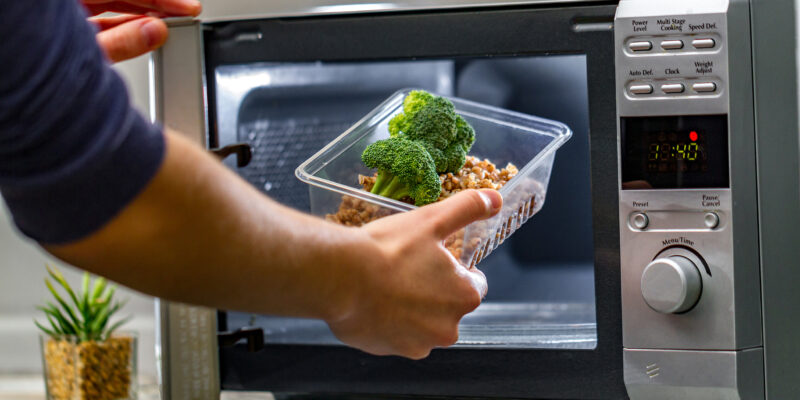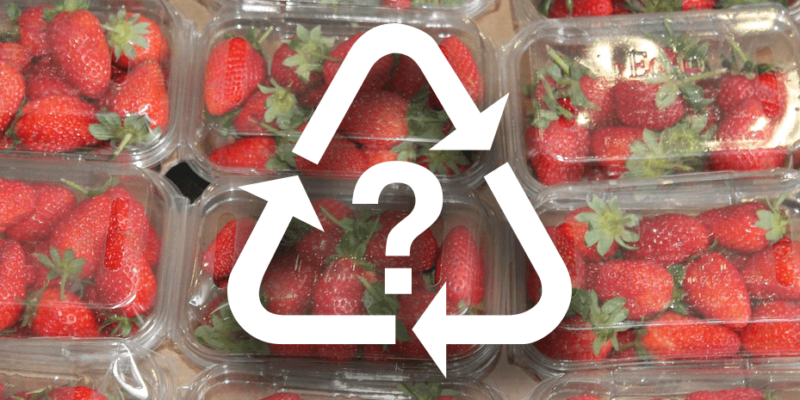
An Introduction to Plastics
Plastic is a versatile material used to make thousands of products people use every day. Learn about the types of plastic classification, history and unique chemistry that gives plastic its variety of uses and applications.
What is Plastic?
A plastic is a type of synthetic or man-made polymer that is similar to natural resins found in trees and other plants. Polymers are any of various complex organic compounds produced by polymerization—a process in which small molecules combine to make a very large chainlike molecule. Polymers can be molded, extruded, cast into various shapes and films, or drawn into filaments and then used as textile fibers.1
Read more on plastic uses and safety.
The History of Manufactured Plastics
The use of manufactured plastics dates back more than 150 years. In 1862, Alexander Parkes, a chemist and inventor, unveiled the first man-made plastic at the International Exhibition in London. The material—which he dubbed “Parkesine”—was derived from cellulose that, once heated, could be molded and also retain its shape when cooled.
Parkes had discovered a material that could be transparent as well as formed into thousands of different shapes. Considered to be the first manufactured plastic, Parkesine was a colorful and less expensive substitute for ivory or tortoiseshell and could be used to make small everyday consumer items that were generally more affordable, from buttons and brush handles.4
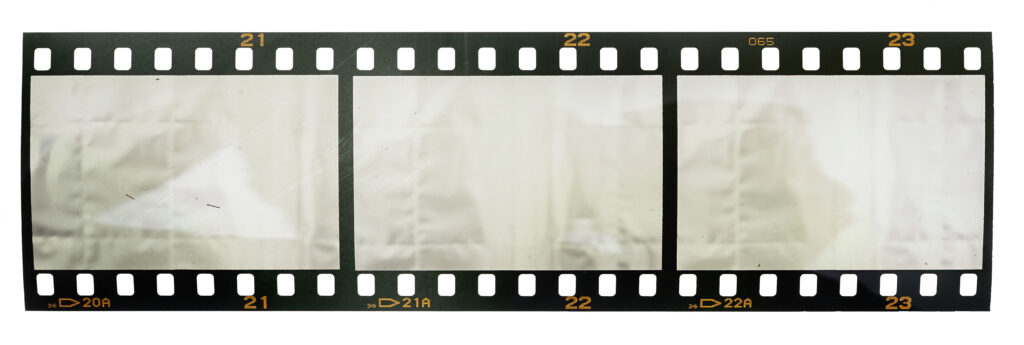
The first notable successor of Parkesine was John Wesley Hyatt‘s celluloid plastic, which was derived from cellulose and alcoholized camphor. Celluloid was used as a substitute for ivory-made billiard balls in late 1860s, but the initial recipe proved to be very flammable. However, by late 1800s, celluloid became the foundation and building block of the movie and photography industry.5
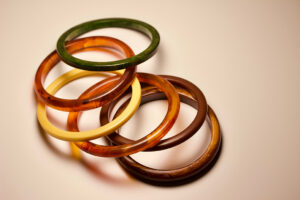 In 1907, chemist Leo Hendrik Baekeland, while striving to produce a synthetic varnish, stumbled upon the formula for a new synthetic polymer originating from coal tar. He subsequently named the new substance “Bakelite.” Once formed, Bakelite would not melt, and, due to its electrical insulation properties, it could be used to make cameras, telephones, non-conducting part of radios and other electrical devices.6 Bakelite was also used as a substitute for jade, marble and amber. By 1909, Baekeland had coined “plastics” as the term to describe this new category of materials.
In 1907, chemist Leo Hendrik Baekeland, while striving to produce a synthetic varnish, stumbled upon the formula for a new synthetic polymer originating from coal tar. He subsequently named the new substance “Bakelite.” Once formed, Bakelite would not melt, and, due to its electrical insulation properties, it could be used to make cameras, telephones, non-conducting part of radios and other electrical devices.6 Bakelite was also used as a substitute for jade, marble and amber. By 1909, Baekeland had coined “plastics” as the term to describe this new category of materials.
The first patent for polyvinyl chloride (PVC), a substance now used widely in vinyl siding and water pipes, was registered in 1914. Cellophane was also discovered during this period.
Wide-scale use of plastics did not really take off until after the First World War. Plastics increasingly began to be used as substitutes for a variety of materials, such as wood in furniture, paper and glass in packaging and steel in cars, during World War I, followed by a surge in plastics production during World War II.7
After World War II, additional types of plastic resins, such as polyurethane, polyester, silicones, polypropylene, and polycarbonate, joined polymethyl methacrylate, polystyrene and PVC in a variety of applications, ranging from prescription bottles to cookware. By the 1960s, plastics were widely accessible due to their inexpensive cost and they had come to be considered commonplace, and a symbol of the growing consumer-oriented society.
Plastic Classification
There are many ways to classify different types of plastics, depending on how they are being grouped together for a particular purpose.
Plastics are typically classified by their chemical structure and physical properties. Classifying plastics in this way includes acrylics, polyurethanes, silicones, polyesters and halogenated plastics.
For purposes of recycling, different types of plastics are sorted into seven resin identification codes, including: #1: PETE/PET, #2: HDPE, #3: PVC, #4: LDPE, #5: PP, #6: PS, and #7: O (Other).
Plastics can also be grouped by the chemical process used in their synthesis, by physical properties (density, heat resistance, hardness, etc.), and by their resistance or reactions to other substances.
In some cases, you’ll even find plastics grouped together based on qualities pertaining to their manufacturing or product design purpose. This may include the chemical processes used to make the plastics, such as thermoplastics and thermoset plastics.
Thermoplastics vs. Thermoset Plastics
Chemists combine various atoms to make molecules, which are simply two or more atoms held together by chemical bonds. When making plastics, these molecules generally are called monomers.
When monomers are combined by chemical bonds into a chain or a network—a process called polymerization—the resulting materials are called polymers, or plastics.2
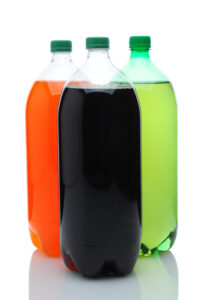 If the monomers join like a chain (picture a string of pearls), the polymer is called a thermoplastic. Thermoplastics melt when heated and solidify when cooled. An example of a thermoplastic is polypropylene used for butter tubs and plastics used for soft drink bottles, microwaveable containers, and PVC for floor and wall coverings.2
If the monomers join like a chain (picture a string of pearls), the polymer is called a thermoplastic. Thermoplastics melt when heated and solidify when cooled. An example of a thermoplastic is polypropylene used for butter tubs and plastics used for soft drink bottles, microwaveable containers, and PVC for floor and wall coverings.2
If the monomers connect in a three-dimensional network, the polymer is called a thermoset. Once a thermoset plastic is set, it cannot return to its liquid state. An epoxy from the hardware store that hardens and cures when applied is an example of a thermoset. Because thermosets are a three-dimensional network of monomers, they can be very tough. Synthetic rubber used for car tires and epoxies used for adhesives and coatings for electrical devices are made with thermoset plastics.2
Plastic Additives
Plastics can be altered by the inclusion of additives that provide a range of qualities and attributes needed to create a specific product. Additives are incorporated into polymers to alter and improve basic mechanical, physical or chemical properties.
Examples of additives include colorants, foaming agents, plasticizers, antimicrobials and flame retardants:
- Colorants are used for decorative value with one of the most common colorants being titanium dioxide for its high whiteness and hiding power.3
- Foaming agents are used in spray foam, for expanded polystyrene cups and building board, and for polyurethane carpet underlayment.
- Plasticizers are added to plastics to improve their flexibility and softness. They are used in wire insulation, flooring, gutters, and some films.
- Antimicrobials are added to plastics such as wall coverings and shower curtains to help prevent the growth of microbes.
- Flame retardants are used to improve the safety of wire and cable coverings in electronic products. They are added to plastics to help prevent, delay, or slow down combustion, and reduce smoke from forming.
Sources
- Science News for Students – Explainer: What are polymers? | Science News for Students
- Plastics Make it Possible® – https://www.plasticsmakeitpossible.com/about-plastics/faqs/professor-plastics-intro-to-the-chemistry-of-plastics/
- National Library of Medicine – Additives in Plastics – envhper00495-0038.pdf (nih.gov)
- The Age of Plastic: From Parkesine to pollution | Science Museum
- History of Plastics – Parkesine and Bakelite
- Bakelite First Synthetic Plastic – National Historic Chemical Landmark – American Chemical Society (acs.org)
- History and Future of Plastics | Science History Institute

